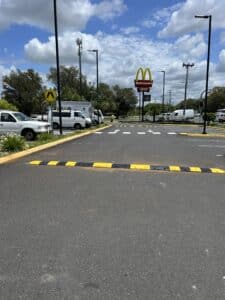
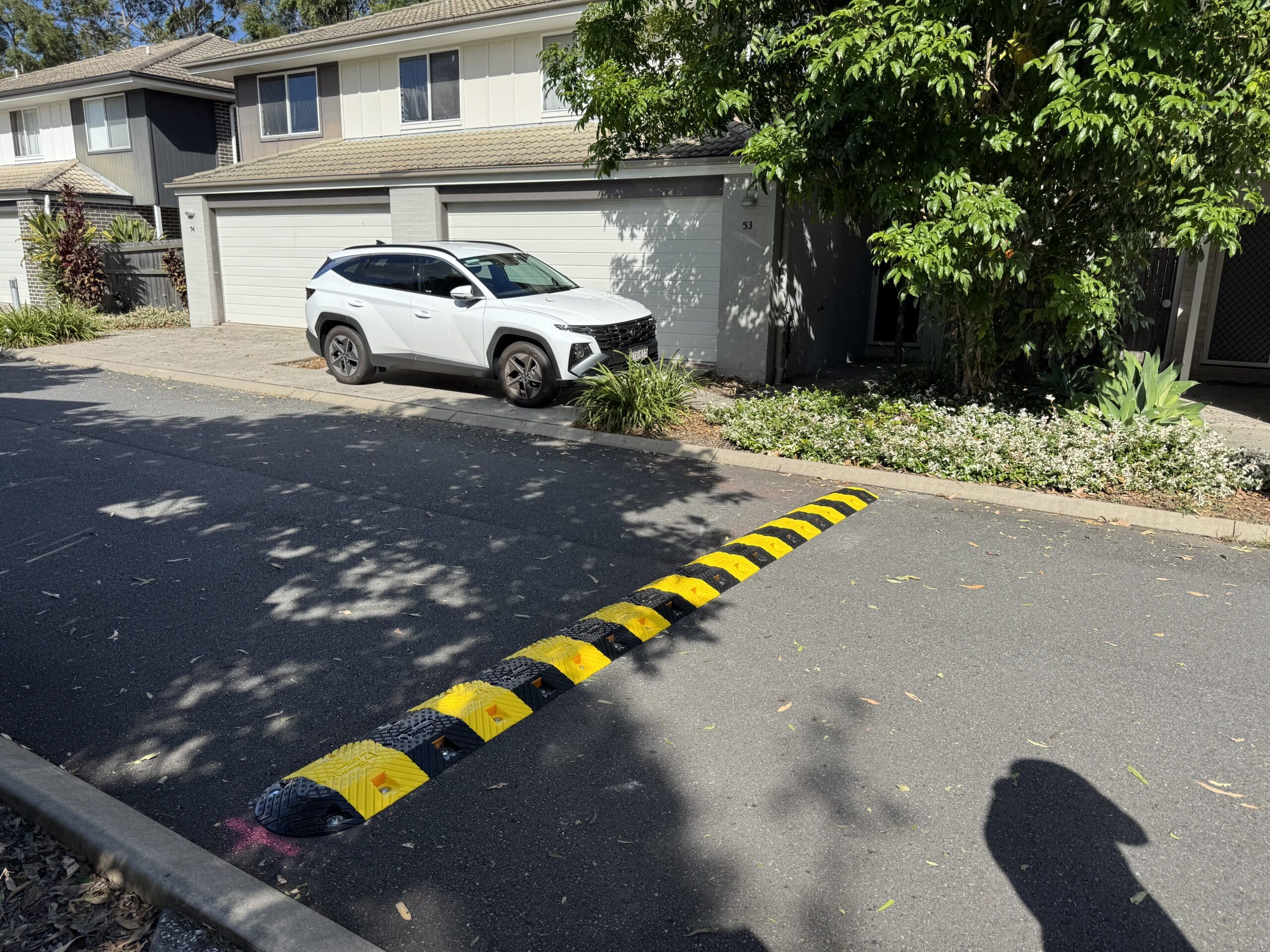
Talk is cheap. Data is useful. But sometimes, nothing beats a photo.
When it comes to reducing speeding, improving safety, and calming traffic in strata complexes, decisions are often guided by feedback, incident reports, and resident complaints. But in this post, we’re taking a different approach—we’re showing the real, visible impact. These before-and-after images reveal what happens when well-placed speed humps and wheel stops are installed: clearer traffic flow, slower vehicle speeds, and a safer environment for everyone on site.
Across multiple residential sites, we’ve seen dramatic improvements in how vehicles behave and how residents feel about their car parks. Here are a few before-and-after examples from recent installs.
Before:

Residents at this inner-city townhouse complex complained about speeding vehicles cutting corners and blind reversing from visitor bays. There were no clear boundaries between drive lanes and parking bays, and the layout encouraged drivers to cut across open areas to save time.
After:
 \
\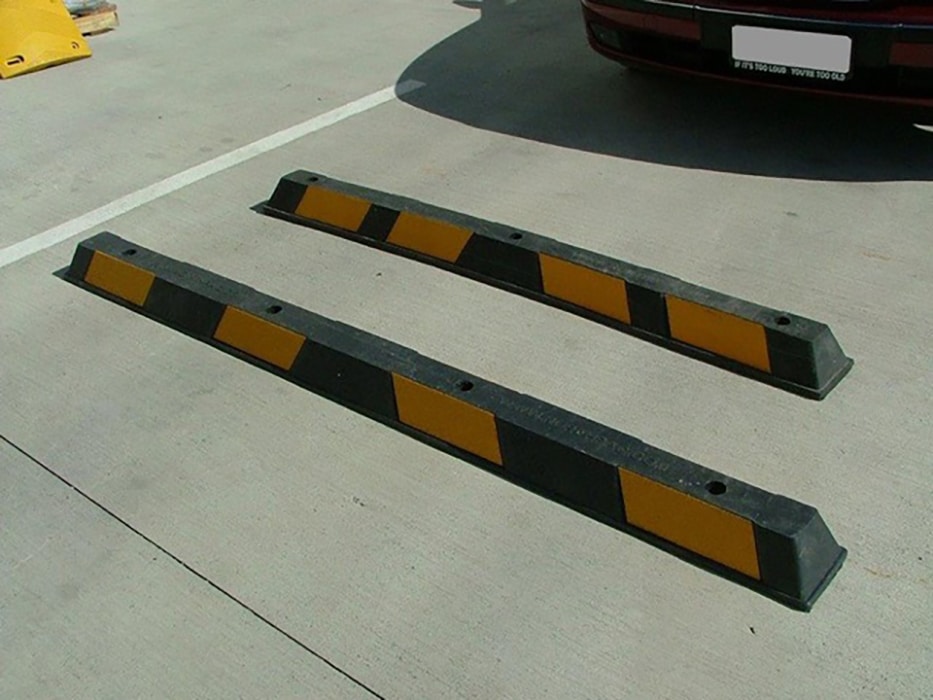
We installed a 50mm flat-top speed hump at the main entry to slow vehicles and added two wheel stops at the edge of the visitor parking bays. This physically prevented vehicles from overhanging into the drive lane and stopped the corner-cutting behaviour.
Resident Feedback:
“We used to hold our breath when the kids went to the car. Now, cars are driving cautiously, and reversing is more predictable.”
Outcome:
Reduced conflict zones. Defined traffic lanes. A visible behavioural shift — all from a 2-hour install.
Before:
Every afternoon, courier and food delivery vehicles rushed through the shared driveway. Residents shared videos of near misses and noted an uptick in complaints about aggressive reversing and unsafe speeds. With long straight driveways and no speed deterrents, drivers treated it like a private road.
After:
Four rubber flat-top speed humps (50mm height) were positioned at crucial points along the 70m driveway, located close to pedestrian entrances and crossings. Yellow reflective signs improved night-time visibility.
Visual Change:
The previously unbroken blacktop was now prominently marked and divided. Speed humps broke up the space visually, indicating caution even before cars slowed down.
Result:
Delivery drivers move at a slower pace. Inhabitants record no complaints during the first month after installation — a first in more than two years.
Before:
This sloping driveway led directly from a residential suburban street into an underground car park. The residents said that the cars coming down the slope would gather momentum and cut the corner, creating a dangerous situation at a critical location with high pedestrian activity.
After:
We added a single flat-top speed hump at the bottom of the slope. It’s a small thing, but it made a big difference. Vehicles now slow down before coming down, and speed and road noise are both decreased.
Side Benefit:
Less structural stress on the concrete ramp — the Body Corporate engineer established that the adjustment can improve the ramp’s service life as a result of softer vehicle entries.
Before:
In this medium-density block, visitor bays backed directly onto a pedestrian path. Without wheel stops, cars frequently overhung the path, forcing pedestrians, including kids on scooters and prams, to walk into the drive lane.
After:
We installed five-wheel stops (1650mm long) using flush mount fixings, which defined parking boundaries without interfering with footpaths or landscaping. Combined with fresh line marking, the space looks managed, not makeshift.
Result:
No more pedestrian diversions. Cleaner lines. And improved compliance from drivers who now park “inside the box” without fail.
Why Before-and-After Matters
It’s easy to become blind to risk when you see it daily. Body corporates and property managers often know a space doesn’t feel safe, but without visible evidence, it’s hard to justify the investment in a fix. That’s where photos help.
Here’s what before-and-after comparisons reveal:
Not all humps are created equal. Some complexes need low-profile humps that won’t annoy residents crossing multiple times a day. Others require higher-profile humps to deal with external traffic — like delivery vans, service vehicles, or impatient tradies.
Here’s what we typically recommend:
You don’t need a dramatic transformation to make a difference.
We installed less than 10 metres of product in most of these sites. The entire process takes less than half a day. The feedback has been consistent: complaints stop, traffic slows, and the whole complex feels safer.
The secret isn’t throwing money at the problem — it’s knowing where to intervene and what to install.
We offer free site inspections for strata complexes and residential estates across Australia. If you’re dealing with:
It might be time for a traffic-calming upgrade.
You’ll get:
When residents stop complaining and start complimenting the car park layout, you know something’s worked.
Speed humps, wheel stops, and proper layout planning aren’t just boxes to tick — they’re proactive safety tools. And as these before-and-after examples show, it doesn’t take long to see the impact.
Need help fixing your site?
We’ve done this across hundreds of complexes — quietly, quickly, and with minimal disruption.
For many body corporate managers, complaints about speeding, poor traffic flow, and pedestrian near-misses feel like an unsolvable part of strata life. No matter how many signs go up or warning emails are sent, it often feels like you’re stuck in a loop of frustration. But what if the solution didn’t take months of meetings or committee headaches?
Here’s how one Brisbane strata complex eliminated a long-running problem in just one afternoon.
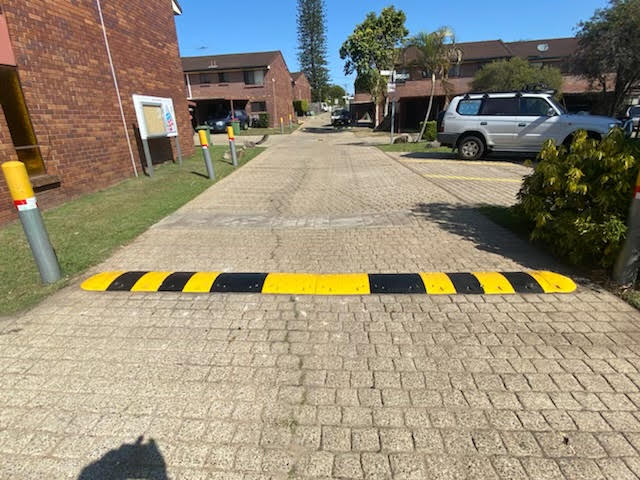
This strata complex was like many others, initially designed in the early 2000s, the internal driveway and shared car park catered to fewer vehicles and less aggressive driving habits.
Fast-forward to today:
Residents had reported issues like:
And the most common complaint of all? Speeding! Particularly by non-residents who didn’t know or care about the layout.
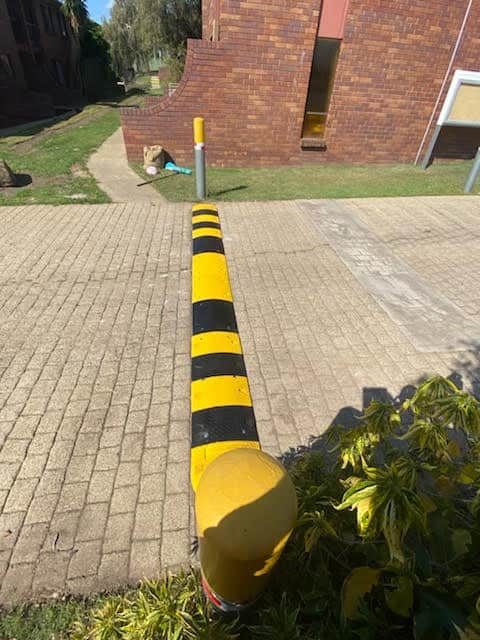
To their credit, the committee didn’t want a band-aid fix. They also didn’t wish for a six-month battle over budgets and complaints about new rules.
So, they reached out to us with a clear brief:
“We need to slow down traffic and make the layout safer, without sparking a revolt from the residents.”
We started with an on-site assessment, walking the full length of the internal driveway, shared bays, and pedestrian access points.
Here’s what we found:
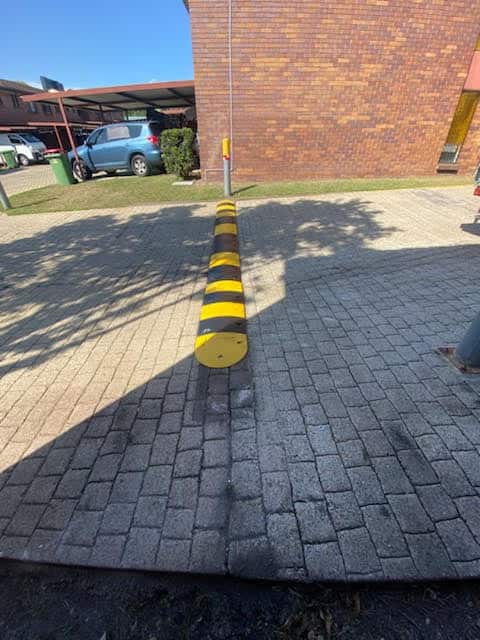
The entire solution came down to three core safety products — and one bright layout plan.
We installed four rubber flat-top speed humps across the key travel lanes:
Why flat-top? They force vehicles to slow down to crawl, not just tap the brakes. The 50mm profile strikes the right balance.
We added two recycled rubber wheel stops near reversing points where cars often rolled into shared paths or garden beds. The goal?
This wasn’t just about products — it was about perception.
We repainted:
These subtle cues help drivers self-correct without enforcement.
Here’s the part most body corporates won’t believe:
We completed this entire upgrade in under 4 hours.
By scheduling the installation:
Residents came home with a safer, more straightforward layout without inconvenience.
We followed up with the committee two weeks later. Here’s what they reported:
✅ Zero new complaints since the install
✅ Multiple residents gave positive feedback, especially parents and older residents
✅ Delivery drivers were noticeably more cautious
✅ Foot traffic near accessways felt safer
One committee member told us:
“I honestly expected at least a few grumbles. But instead, I’ve had people say, ‘Why didn’t we do this sooner?’”
This wasn’t a miracle. It resulted from choosing the right products, not overcomplicating the solution, and acting before things worsened.
Key lessons:
If your strata complex is facing the same issues:
Don’t wait for a claim or a confrontation to trigger action.
We offer free on-site safety audits tailored to residential and mixed-use complexes. We’ll walk the site, map out the high-risk zones, and recommend the right upgrades for your layout and budget.
You don’t need a complete redesign to fix a safety issue in your strata car park. Sometimes, the answer is just four-speed humps, two-wheel stops, and a well-timed afternoon.
And that’s precisely what got one Brisbane complex off the complaint treadmill — for good.



For 10 years, our focus has been on one thing: to provide one style of product and to do it well.
Our wheel stops, speed humps and rumble bars meet Australian Standards, don’t fade, and we’ve never needed to replace one.

For 10 years, our focus has been on one thing: to provide one style of product and to do it well.
Our wheel stops, speed humps and rumble bars meet Australian Standards, don’t fade, and we’ve never needed to replace one.